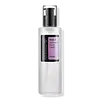What's inside
What's inside
 Key Ingredients
Key Ingredients

 Benefits
Benefits

 Concerns
Concerns

 Ingredients Side-by-side
Ingredients Side-by-side

Aloe Barbadensis Leaf Extract
EmollientWater
Skin ConditioningSodium Methyl Oleoyl Taurate
CleansingLauryl Glucoside
CleansingGlycerin
HumectantSodium Chloride
MaskingPanthenol
Skin ConditioningSodium Olivate
CleansingChamaecyparis Obtusa Leaf Extract
Skin ConditioningRosa Rugosa Leaf Extract
HumectantCitric Acid
BufferingMelissa Officinalis Leaf Extract
Skin ConditioningSodium Sweetalmondamphoacetate
Cleansing1,2-Hexanediol
Skin ConditioningDisodium EDTA
Papain
Skin ConditioningSodium Hyaluronate
HumectantMaltodextrin
AbsorbentPropanediol
SolventSodium Hyaluronate Crosspolymer
HumectantHydrolyzed Glycosaminoglycans
HumectantBenzyl Glycol
SolventHydrolyzed Hyaluronic Acid
HumectantEthylhexylglycerin
Skin ConditioningHyaluronic Acid
HumectantRaspberry Ketone
MaskingAloe Barbadensis Leaf Extract, Water, Sodium Methyl Oleoyl Taurate, Lauryl Glucoside, Glycerin, Sodium Chloride, Panthenol, Sodium Olivate, Chamaecyparis Obtusa Leaf Extract, Rosa Rugosa Leaf Extract, Citric Acid, Melissa Officinalis Leaf Extract, Sodium Sweetalmondamphoacetate, 1,2-Hexanediol, Disodium EDTA, Papain, Sodium Hyaluronate, Maltodextrin, Propanediol, Sodium Hyaluronate Crosspolymer, Hydrolyzed Glycosaminoglycans, Benzyl Glycol, Hydrolyzed Hyaluronic Acid, Ethylhexylglycerin, Hyaluronic Acid, Raspberry Ketone
 Reviews
Reviews

Ingredients Explained
These ingredients are found in both products.
Ingredients higher up in an ingredient list are typically present in a larger amount.
1,2-Hexanediol is a synthetic liquid and another multi-functional powerhouse.
It is a:
- Humectant, drawing moisture into the skin
- Emollient, helping to soften skin
- Solvent, dispersing and stabilizing formulas
- Preservative booster, enhancing the antimicrobial activity of other preservatives
Panthenol is a common ingredient that helps hydrate and soothe the skin. It is found naturally in our skin and hair.
There are two forms of panthenol: D and L.
D-panthenol is also known as dexpanthenol. Most cosmetics use dexpanthenol or a mixture of D and L-panthenol.
Panthenol is famous due to its ability to go deeper into the skin's layers. Using this ingredient has numerous pros (and no cons):
Like hyaluronic acid, panthenol is a humectant. Humectants are able to bind and hold large amounts of water to keep skin hydrated.
This ingredient works well for wound healing. It works by increasing tissue in the wound and helps close open wounds.
Once oxidized, panthenol converts to pantothenic acid. Panthothenic acid is found in all living cells.
This ingredient is also referred to as pro-vitamin B5.
Learn more about PanthenolSodium Hyaluronate is hyaluronic acid's salt form. It is commonly derived from the sodium salt of hyaluronic acid.
Like hyaluronic acid, it is great at holding water and acts as a humectant. This makes it a great skin hydrating ingredient.
Sodium Hyaluronate is naturally occurring in our bodies and is mostly found in eye fluid and joints.
These are some other common types of Hyaluronic Acid:
Learn more about Sodium Hyaluronate